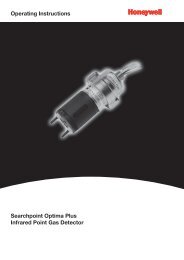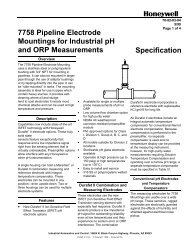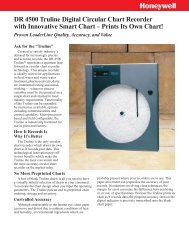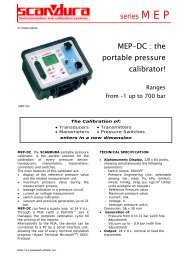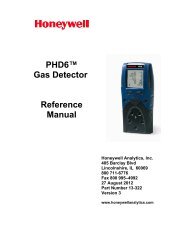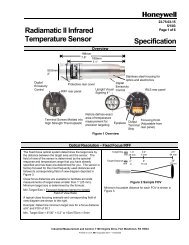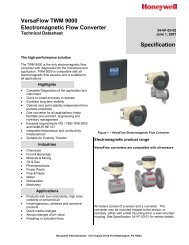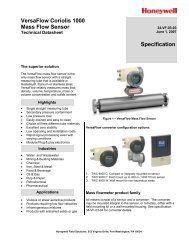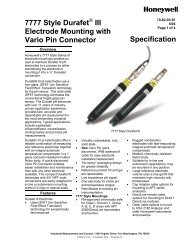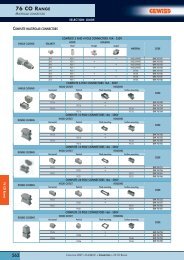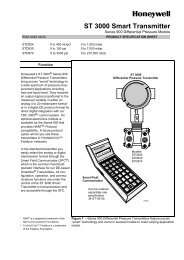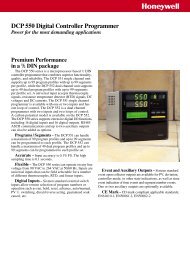Technical Manual Series 3000 MkII Gas Detector - Merkantile
Technical Manual Series 3000 MkII Gas Detector - Merkantile
Technical Manual Series 3000 MkII Gas Detector - Merkantile
You also want an ePaper? Increase the reach of your titles
YUMPU automatically turns print PDFs into web optimized ePapers that Google loves.
SERIES <strong>3000</strong> MKII TECHNICAL MANUAL<br />
S3KMKIIMAN_MAN0878_Issue 1_01-10<br />
6 Electrical connections<br />
Prior to installation refer to the transmitter control drawing <strong>3000</strong>E3106 and remote<br />
sensor control drawing <strong>3000</strong>E3157 shown in section 21.<br />
WARNINGS<br />
<strong>Series</strong> <strong>3000</strong> <strong>MkII</strong> is designed for installation and use in Zone 1 or 2 hazardous areas<br />
in Europe and Class I Division 1 or 2 and Class II Division 1 or 2 area applications in<br />
North America.<br />
Installation must be in accordance with the recognized standards of the appropriate<br />
authority in the country concerned.<br />
Use copper wiring only.<br />
Access to the interior of the detector, when carrying out any work, must only be<br />
conducted by trained personnel.<br />
Before carrying out any work ensure local regulations and site procedures are<br />
followed. Appropriate standards must be followed to maintain the overall<br />
certification of the detector.<br />
To reduce risk of ignition of hazardous atmospheres, conduit runs must have a seal<br />
fitting connected within 18 inches of the enclosure.<br />
To reduce the risk of ignition of hazardous atmosphere, de-classify the area or<br />
disconnect the equipment from the supply circuit before opening the detector<br />
enclosure. Keep assembly tightly closed during operation.<br />
Never attempt to open a junction box/enclosure in potentially hazardous<br />
atmospheres.<br />
The detector must be earthed/grounded for electrical safety and to limit the effects<br />
of radio frequency interference. An earth/ground point is provided inside and<br />
outside the unit. The internal grounding shall be used as the primary equipment<br />
ground. The external terminal is only a supplemental bonding connection where<br />
local authorities permit or require such a connection.<br />
Take care when handling sensors as they may contain corrosive solutions.<br />
Do not tamper or in any way dis-assemble the sensor.<br />
Do not expose to temperatures outside the recommended range.<br />
Do not expose sensor to organic solvents or flammable liquids.<br />
At the end of their working life, sensors must be disposed of in an environmentally<br />
safe manner. Disposal should be according to local waste management<br />
requirements and environmental legislation.<br />
Alternatively, sensors may be securely packaged and returned to<br />
Honeywell Analytics clearly marked for environmental disposal.<br />
11



